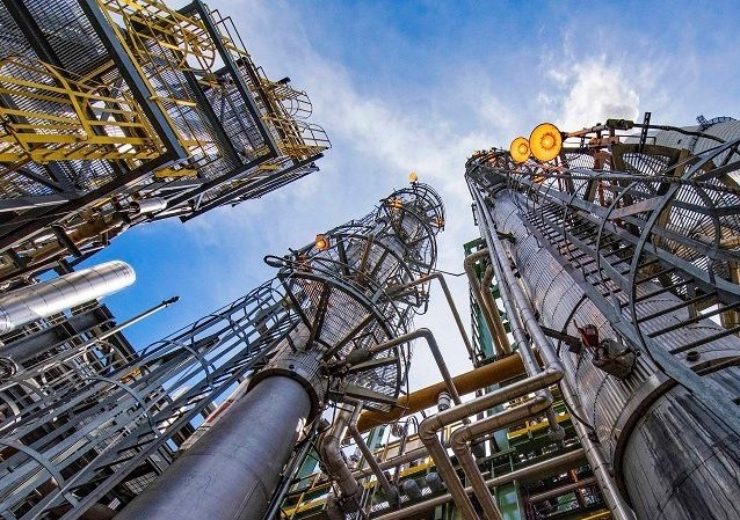
With around 200 carbon capture, utilisation and storage (CCUS) projects now in the pipeline, the fledgling sector is set for significant growth in 2022 – but cost controls, operational success and political support will be essential to maintain pace, says Wood Mackenzie.
New insight from the Edinburgh-headquartered consultancy titled ‘Subsurface CCUS and low carbon energies: 5 things to look for in 2022’ explores trends and benchmarks for the coming year.
According to its analysis, just 61 million tonnes per annum (tpa) is currently operational globally, though the 200 CCS projects announced in 2021 bring total development capacity to around 700 million tpa.
Development of these projects is vital, as CCUS accounts for some 20% of the emissions reduction effort needed to achieve global net zero by 2050, based on the group’s analysis.
At present, development is not widespread. Around three-quarters of currently announced projects are sited in just four countries: US, Canada, UK and Australia.
The consultancy is tracking 15 key CCUS projects which are aiming for FID in 2022, requiring around $18 billion of development capex. If developed successfully, it estimates they would add around 35 million tpa of CO2 capture or storage capacity.
These projects are:
- East Coast Cluster in the UK, which intends to capture up to 27 million tpa of emissions by 2030
- Kairos@C, which plans to capture 14.2 million tonnes of CO2 over its first 10 years in operation at an industrial site at the Port of Antwerp
- HyNet North West, a UK decarbonisation project that plans to reduce emissions by 10 million tpa
- Bayu Undan, which has the potential capacity to store 10 million tpa of emissions in a nearly depleted gas field off Timor-Leste
- Project Tundra, which plans to capture 4 million tpa in North Dakota
- Kasawari, where Petronas has intends to capture an average of 3.7 million tpa of CO2 off Sarawak
- Porthos, a Rotterdam project with plans to capture about 2.5 million tpa of CO2 for 15 years
- Polaris/Barents Blue, which will initially store 2 million tpa of CO2 in Finnmark, Norway, from the Barents Blue ammonia production plant
- Lake Charles Methanol, with plans to capture 90% of carbon dioxide emissions from its Louisiana methanol production facility
- Yamal, Russia’s first CCS project, where it will be used to reduce emissions from LNG operations on the Yamal Peninsula in Western Siberia
- Ghasha, where carbon capture will be integrated with the Ghasha Concession fields in Abu Dhabi
- DAC to Fuels, a direct air capture project that aims produce low-carbon fuels from captured CO2 in British Columbia, Canada
- DAC-1, a direct air capture project in the US Permian basin that would scale up to capture 1 million tpa of CO2
- Flagship One, which will convert CO2 into synthetic e-methanol in Sweden
- H2Perth, a blue hydrogen and ammonia production facility that includes carbon capture
Analysts expect that hubs and CCUS clusters which combine industrial sources and close proximity to storage locations will dominate new project announcements this year. At the subsurface level, it expects depleted reservoirs, EOR and saline aquifers to dominate interest, with the former two to make up the bulk of near-term projects.
In a separate blog, chairman and chief analyst Simon Flowers notes that CCUS project costs vary from $20/tonne of CO2 to $150/tonne, with an average weighted cost of $58/tonne for projects being considered today.
“That’s the breakeven carbon price to meet a pre-tax target IRR over the project life. It compares with a current average global carbon price of around $28/tonne and prices in Europe of near $100/tonne,” he said.
“Today’s projects target mainly the lower hanging fruit. These include natural gas processing ($25/tonne, only, more costly if expensive new wells have to be drilled); blue hydrogen production (mainly in refineries, $60/tonne); and natural gas processing ($75/tonne, post-combustion). Our modelling implies the average CCS project in the power sector needs a carbon price of $100/tonne.”
Meanwhile, analysts say more than $66 billion was invested in hydrogen in 2021, covering the full value chain from R&D to refuelling infrastructure.
However, “much more capital flow” must be mobilised for hydrogen production projects, which can be unlocked by an increase in offtake agreements. This, the authors said, could help mobilise the $3.5-22 billion needed for hydrogen production projects to reach FID in 2022.
Recommended for you
